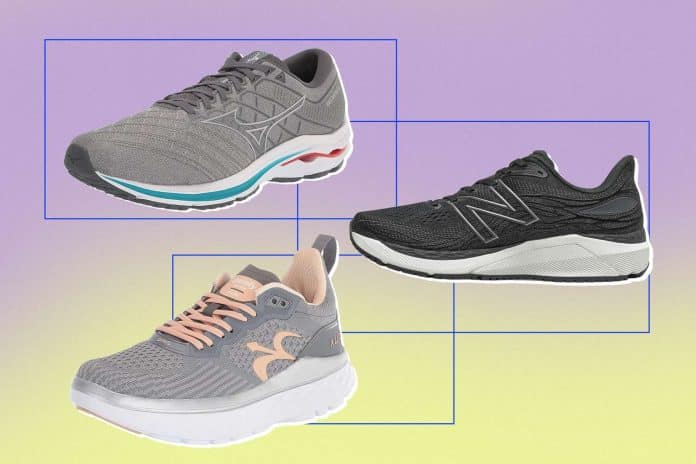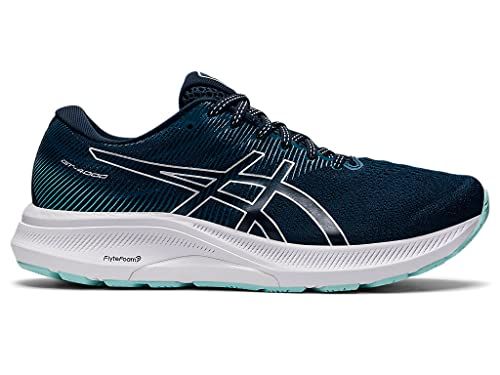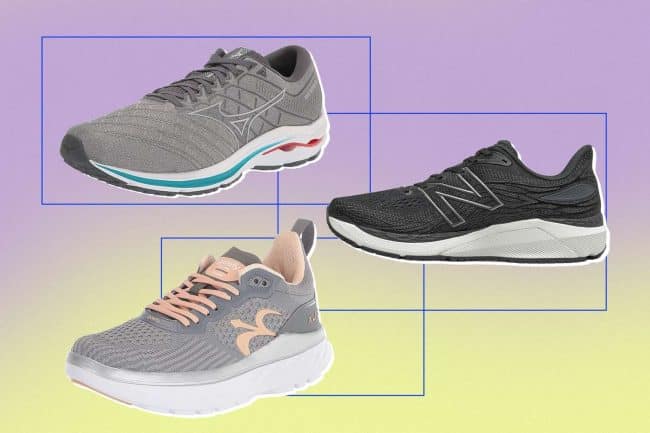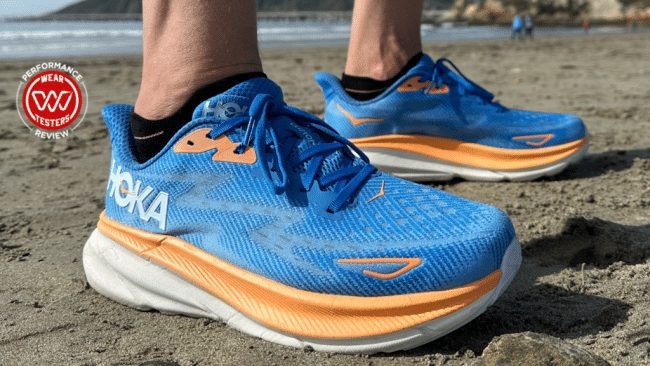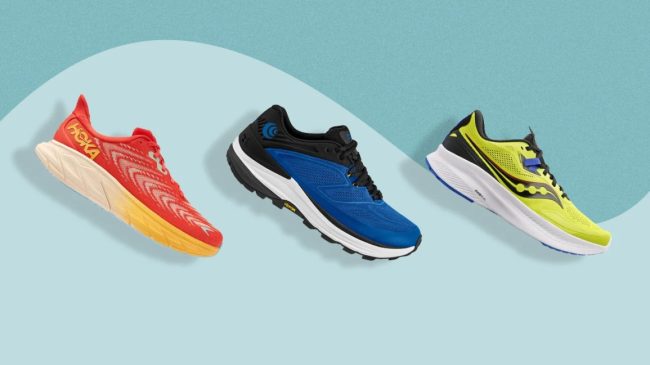Have you ever wondered if there are running shoes designed specifically for flat feet? Well, in this article, we are going to explore just that! Flat feet can pose unique challenges when it comes to finding the right pair of running shoes that provide the necessary support and comfort. But fear not, because we have done the research for you and are here to share our findings. So, if you have flat feet or know someone who does, keep reading to discover the best running shoe options available to support your feet and enhance your running experience.
This image is property of hips.hearstapps.com.
Review contents
What Are Flat Feet?
Definition of flat feet
Flat feet, also known as fallen arches, is a common condition where the arch of the foot is abnormally low or completely absent. In individuals with flat feet, the entire sole of the foot makes contact with the ground when standing or walking, as opposed to a normal foot arch that creates an arch in the middle of the foot. This condition can affect one or both feet and is often present from a young age.
Causes of flat feet
There are several potential causes of flat feet. In some cases, individuals are born with flat feet due to a genetic predisposition. Other common causes include weak arch muscles, foot or ankle injuries, obesity, excessive standing or walking, and certain medical conditions such as arthritis or diabetes. Flat feet can also develop as a result of age-related wear and tear on the tendons and ligaments that support the arch.
Signs and symptoms of flat feet
Flat feet can present with a range of signs and symptoms, which can vary from person to person. Some individuals may experience pain or discomfort in the feet, particularly in the arch area or along the inner side of the ankle. Swelling and tenderness can also occur. Others may notice an imbalance in their gait or have difficulty participating in physical activities that require running or jumping. In some cases, flat feet can contribute to pain in other areas of the body, such as the knees, hips, or lower back.
The Importance of Proper Footwear for Flat Feet
Effects of flat feet on running
For individuals with flat feet, running can pose unique challenges. The lack of a proper arch can lead to overpronation, a condition where the foot rolls inward excessively during the running gait. This can cause poor alignment, instability, and increased stress on the muscles, tendons, and ligaments of the foot and lower leg. Over time, this can lead to pain, injuries, and reduced performance.
Benefits of using running shoes for flat feet
Using running shoes specifically designed for flat feet can provide significant benefits. These shoes are built with features that address the unique needs of individuals with flat feet. They provide proper arch support, stability, motion control, and cushioning, which help to correct overpronation, reduce impact forces, and improve overall biomechanics. This can enhance comfort, prevent injuries, and enhance running efficiency for individuals with flat feet.
Preventing injuries with the right footwear
Inadequate footwear can increase the risk of developing injuries for individuals with flat feet. Without proper arch support and cushioning, the feet are more susceptible to stress fractures, plantar fasciitis, Achilles tendonitis, shin splints, and other overuse injuries. Utilizing appropriate running shoes customized for flat feet can help prevent these injuries by providing the necessary support, shock absorption, and stability for optimal foot function during running activities.
Characteristics of Running Shoes for Flat Feet
Arch support
One of the most essential features of running shoes for flat feet is adequate arch support. This is crucial for promoting a healthy foot arch, reducing pronation, and providing stability while running. Look for shoes that have built-in arch support or the option to insert custom orthotic inserts if needed.
Motion control features
To address overpronation and maintain proper foot alignment during running, running shoes for flat feet often incorporate motion control features. These features are designed to limit excessive inward rolling of the foot and ankle, promoting a more efficient and stable gait. Look for shoes with supportive materials, such as firmer midsoles and reinforced heel counters, to provide effective motion control.
Cushioning and shock absorption
Flat feet can make the feet more susceptible to impact forces while running. To alleviate this problem, running shoes for flat feet should have ample cushioning and shock absorption properties. These features help to reduce the stress on the feet and lower limbs, providing a more comfortable and supportive running experience.
Stability and control
Stability is vital for individuals with flat feet to maintain a proper running gait and minimize the risk of injuries. Look for running shoes that offer stability features, such as wider soles, reinforced medial posts, and supportive overlays. These features enhance stability and control, ensuring a more secure and efficient running stride.
The Best Running Shoes for Flat Feet
Brands that offer running shoes for flat feet
Several reputable brands specialize in manufacturing running shoes for individuals with flat feet. Some of the top brands known for their quality and selection in this category include Nike, Brooks, New Balance, Saucony, Asics, and Mizuno. These brands have a proven track record of producing running shoes with the necessary features and technologies to support flat feet.
Top models recommended by experts
While choosing the best running shoes for flat feet ultimately comes down to individual preferences and needs, experts often recommend specific models based on their design and performance. Some highly regarded models for individuals with flat feet include the Nike Air Zoom Structure, Brooks Adrenaline GTS, New Balance 860, Saucony Guide, Asics Gel-Kayano, and Mizuno Wave Inspire. These shoes consistently receive positive reviews for their arch support, stability, and overall comfort.
Key features of the best running shoes for flat feet
The best running shoes for flat feet share a few key features that set them apart. They provide superior arch support through built-in features or the option to use custom orthotic inserts. These shoes also offer motion control technologies to correct overpronation and maintain proper foot alignment. Additionally, they prioritize cushioning and shock absorption to reduce impact forces and enhance comfort. Finally, top running shoes for flat feet emphasize stability and control through wider soles, supportive materials, and reinforced areas.
This image is property of www.shape.com.
Choosing the Right Running Shoes for Flat Feet
Professional gait analysis
To ensure a proper fit and find the most suitable running shoes for flat feet, it is recommended to undergo a professional gait analysis. This analysis involves a trained specialist observing your walking and running gait, assessing your foot mechanics, and determining the level of pronation. Based on the analysis, the expert can provide valuable insights and recommendations on the ideal type of running shoes to support your flat feet.
Understanding pronation
Pronation is a natural movement of the foot that allows for shock absorption and a smooth gait cycle. For individuals with flat feet, it is important to understand the degree of pronation to select the appropriate running shoes. Overpronation, where the foot rolls inward excessively, is common in individuals with flat feet. Look for running shoes that offer stability features and motion control to address overpronation and promote a more neutral alignment.
Trying on different shoe types
When choosing running shoes for flat feet, it is crucial to try on different shoe types to determine the best fit and feel. While brand recommendations and expert opinions can guide your selection, personal comfort is paramount. Try on multiple options to assess how each shoe supports your arches, stabilizes your foot, and feels during movement. Take note of the level of comfort, support, and overall fit to make an informed decision.
Considering personal preferences
Running shoes come in a variety of styles, colors, and designs. While the focus should primarily be on functionality and support for flat feet, it is worth considering personal preferences as well. Choose a shoe that suits your personal taste and style, as this can contribute to your overall satisfaction and motivation to stick to a regular running routine.
Other Considerations for Flat Feet Runners
Orthotic inserts and custom orthotics
In addition to running shoes specifically designed for flat feet, orthotic inserts or custom orthotics can further enhance comfort and support. These devices are molded to match the unique shape and needs of your feet, providing additional stability and correcting any imbalances. They can be used in conjunction with running shoes to optimize foot alignment and minimize the risk of injuries.
Strength exercises for flat feet
Strengthening the muscles that support the arch can be beneficial for individuals with flat feet. Exercises such as toe curls, heel raises, and arch lifts can help strengthen the arch and improve overall foot stability. Consult with a physical therapist or athletic trainer for specific exercises tailored to your needs and abilities.
Stretching and flexibility exercises
Maintaining flexibility in the feet, ankles, and calves can also help individuals with flat feet. Stretching exercises targeting these areas can improve range of motion, enhance foot mechanics, and reduce the risk of tightness and discomfort. Incorporate stretching routines into your regular exercise regimen and warm up before running to prevent muscle imbalances and promote optimal performance.
Regular foot care and maintenance
Proper foot care is essential for individuals with flat feet. Keep your feet clean and dry to prevent fungal infections. Regularly inspect your feet for any abnormalities or signs of irritation, such as blisters or calluses. Trim your toenails properly to avoid ingrown nails. Additionally, moisturize your feet to maintain their elasticity and prevent dryness or cracking. By taking care of your feet, you can promote their health and overall well-being.
This image is property of cdn.weartesters.com.
Common Mistakes to Avoid When Buying Running Shoes for Flat Feet
Believing that any running shoe will do
One common mistake is assuming that any running shoe will suffice for individuals with flat feet. Not all running shoes provide the necessary support and features to accommodate flat feet. It is important to choose shoes specifically designed for flat feet to ensure optimal comfort and prevent potential injuries.
Relying solely on brand reputation
While reputable brands often offer reliable running shoes, it is essential to focus on individual needs rather than brand reputation alone. Keep in mind that different shoe models within a brand can vary in terms of arch support, stability, and suitability for flat feet. Consider expert recommendations, personal preferences, and proper fitting when selecting the most suitable running shoes.
Ignoring individual foot needs and pronation
Flat feet can vary in severity and pronation level. Ignoring or overlooking these individual factors can lead to improper shoe selection. Pay attention to your specific foot mechanics, pronation pattern, and any existing discomfort or pain. Choose running shoes that address these needs to provide the necessary support, stability, and correction.
Neglecting to replace worn-out shoes
Running shoes, like any other athletic footwear, undergo wear and tear over time. Neglecting to replace worn-out shoes can compromise their support and cushioning, potentially worsening the conditions associated with flat feet. Regularly assess the condition of your running shoes and replace them when necessary to maintain optimal foot health and minimize the risk of injuries.
Frequently Asked Questions About Running Shoes for Flat Feet
Can running shoes cure flat feet?
Running shoes cannot cure flat feet, as it is a structural condition. However, running shoes specifically designed for flat feet can help alleviate symptoms, improve foot mechanics, and provide the necessary support and stability for comfortable running.
Is barefoot running a good option for flat feet?
Barefoot running is not generally recommended for individuals with flat feet. The absence of shoes can exacerbate the biomechanical issues associated with flat feet and increase the risk of injuries. It is advisable to opt for running shoes that provide proper support and cushioning to promote a healthy and pain-free running experience.
How often should I replace my running shoes?
The lifespan of running shoes can vary depending on factors such as mileage, running surface, and individual biomechanics. On average, running shoes should be replaced every 300-500 miles or every 6-12 months, whichever comes first. Pay attention to visible signs of wear and diminished cushioning to determine when it is time for a replacement.
Can wearing the wrong shoes worsen flat feet?
Wearing the wrong shoes can exacerbate the symptoms and discomfort associated with flat feet. Using shoes without proper arch support, stability, or cushioning can contribute to overpronation, increase stress on the feet and lower limbs, and lead to pain and injuries. It is crucial to choose appropriate running shoes for flat feet to avoid worsening the condition and promoting optimal foot health.
This image is property of i0.wp.com.
Conclusion
For individuals with flat feet, choosing the right running shoes is crucial for comfortable and pain-free running. Running shoes specifically designed for flat feet provide the necessary arch support, motion control, cushioning, and stability to correct and alleviate the challenges associated with flat feet. By prioritizing proper footwear, considering individual needs, and maintaining foot care and strength, runners with flat feet can enjoy a rewarding and injury-free running experience.

